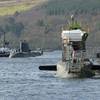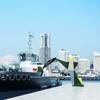Preventing Nuclear Smuggling at U.S. Ports
Chairman Duncan Hunter (R-CA) Subcommittee on Coast Guard and Maritime Transportation Hearing on “An Examination of the Maritime Nuclear Smuggling Threat and Other Port Security and Smuggling Risks in the U.S.”
The subcommittees are meeting today to examine the efforts of the Department of Homeland Security to prevent the smuggling of nuclear materials in U.S. ports and other port security risks. This hearing follows last year’s hearing which examined the prevention and response to a dirty bomb at a U.S. port.
It seems clear that Islamic extremists aspire to carry out a radiological attack, so this is a threat we need to take seriously. If they succeed even once, the consequences would be catastrophic. To be prepared, we must ensure that we have the proper screening and response protocols in place.
Today we will continue to review these efforts as well as broader governmental efforts to reduce threats to our ports. I want to thank Chairwoman Martha McSally and the House Committee on Homeland Security for agreeing to explore this important topic in a joint hearing.
The security of our maritime ports and borders remain a serious concern for the United States. Our nation relies on the commerce that flows through our ports including the more than 41 percent of foreign trade that is moved on vessels every year. Providing adequate security requires an innovative, multifaceted approach which has to begin far from U.S. shores and has to be flexible enough to keep pace with the ever changing threats to our national security.
After 9/11, security measures were enacted to better protect our homeland by expanding efforts to detect and deter threats overseas. These efforts include screening cargo manifests before containers are loaded onto a U.S.-bound ship, scanning shipping containers that have been determined to be high-risk, screening ship personnel data, and tracking ships and their cargo as they make their way to our shores. Despite these efforts, I remain concerned that we are still not employing the best technology to detect the presence of nuclear or radiological material in containerized cargo.
However, containers are not the only avenue for smuggling harmful materials and weapons into U.S. ports. Small vessels pose an equally devastating threat and are just as difficult as containers to determine legitimate uses from potential threats. Commercial and recreational small vessels can easily blend into the daily activity of U.S. waterways yet can be converted to a stand-off weapons platform or used as a direct-attack to deliver a water-borne improvised explosive device.
We will hear from our witnesses today on how the federal government deploys a whole-of-government, layered approach including law enforcement, technology, and intelligence to detect, deter, and interdict potential threats. These internal measures are combined with treaties and agreements with foreign governments to conduct cooperative enforcement efforts at ports overseas.
I look forward to continuing our discussion from last year and learning more about the ongoing efforts to keep our ports and nation safe.











